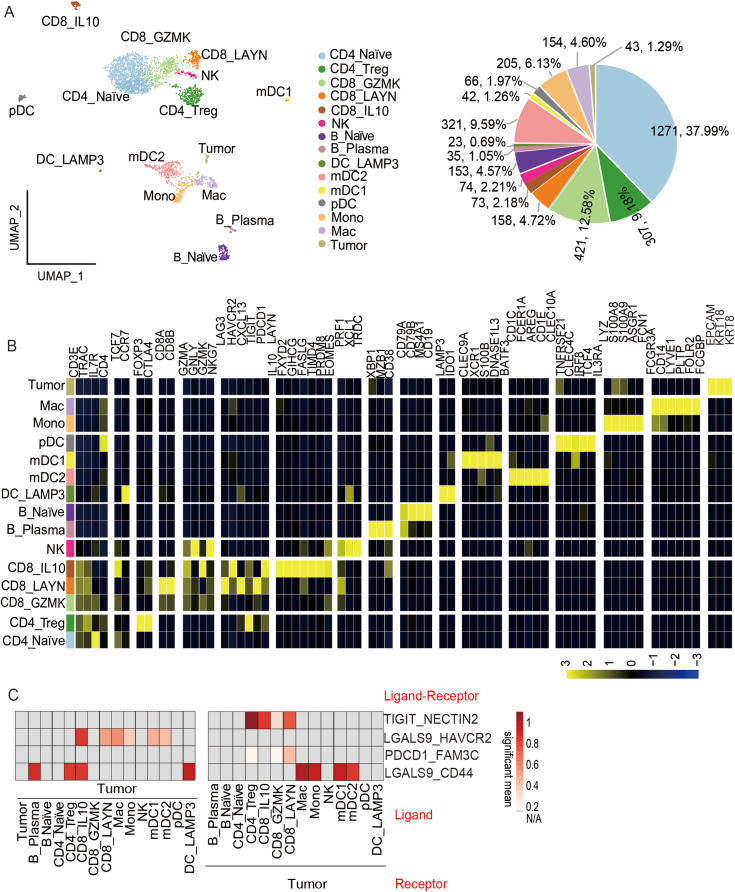
The characteristics of cerebrospinal fluid tumor microenvironment in a patient with leptomeningeal metastases from cancer of unknown primary


Cancer of unknown primary (CUP) is a rare disease characterized by metastases in which the primary tumor is of unknown origin. The cerebrospinal fluid (CSF) tumor microenvironment of CUP is still unknown. A Chinese male was diagnosed with leptomeningeal metastases from CUP (CUP-LM) based on the following medical examination results: partial leptomeningeal enhancement by brain magnetic resonance imaging, few malignant cells of diverse morphology in CSF, and no abnormalities or lymphadenopathy by systemic examination. The CSF tumor microenvironment was analyzed by single-cell RNA sequencing (10× genomics). A total of 3346 cells of high quality were enrolled for analysis and classified into eight major cell types. The CSF tumor microenvironment of the CUP-LM case showed CD8+ T cells in a dysfunctional state, an increased proportion of regulatory T cells (Treg) and LAMP3-positive dendritic cells, which helped shape an immunosuppressive landscape. In addition, intensive communications between CD4_Treg and other cell subtypes were identified from aspects of inhibitory, costimulatory, or chemokine communications. The tumor cells enhanced the immunosuppressive tumor microenvironment by the interaction of co-inhibitory checkpoints with the tumor-infiltrating immune cells.
